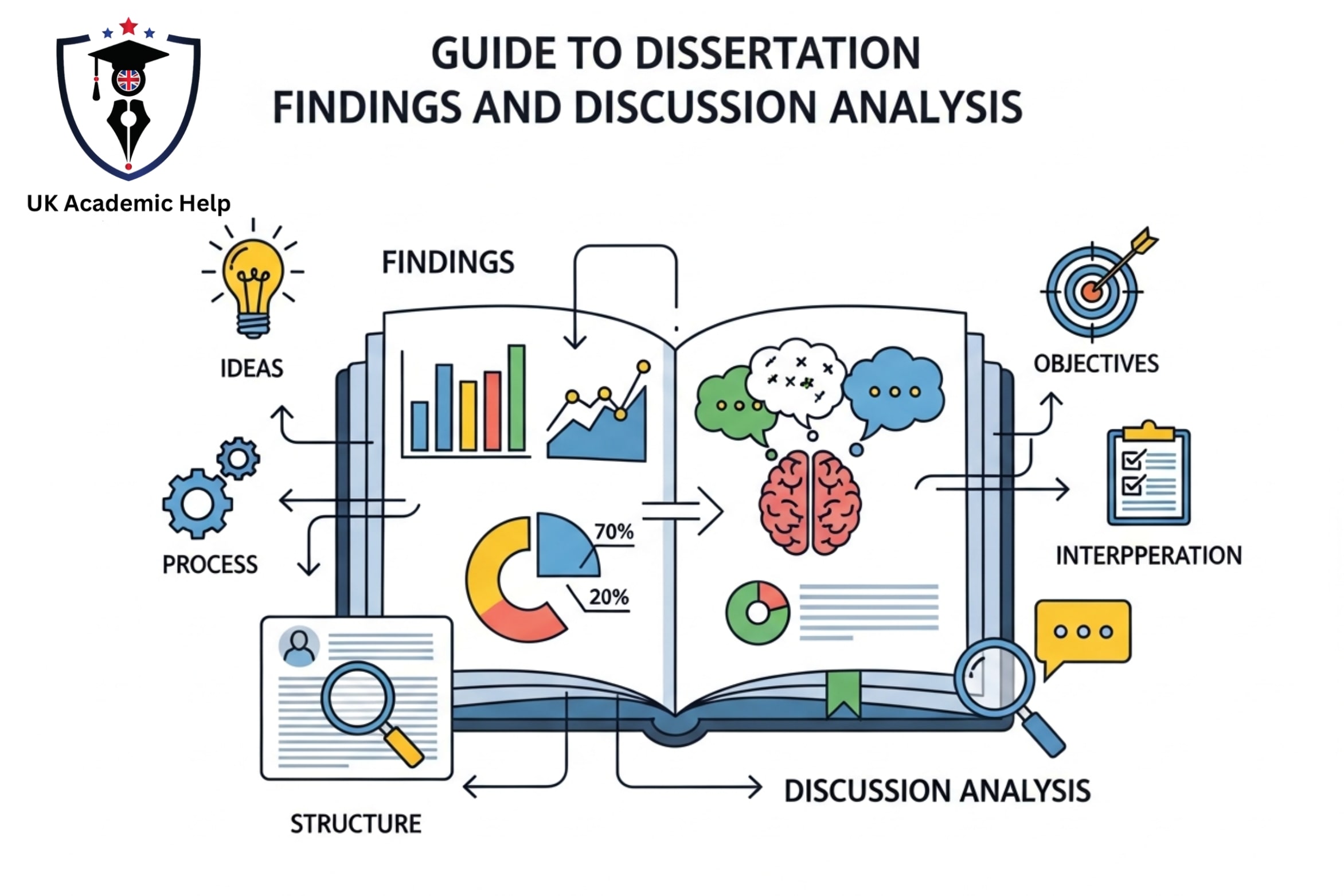Table of Contents
- 1 Qualitative vs Quantitative Dissertation: Which One Should UK Students Choose?
- 2 When Students First Get Stuck: The Method Choice Panic
- 3 What a Qualitative Dissertation Actually Is (Human, Analytical, Exploratory)
- 4 What a Quantitative Dissertation Actually Is (Structured, Measurable, Statistical)
- 5 How to Choose Between Qualitative and Quantitative (The Real Academic Logic)
- 6 Dissertation Support: Short, Search-Ready Answers
- 7 Common Mistakes UK Students Make When Choosing a Method
- 8 How UK Academic Standards Influence Method Choice
- 9 When Qualitative Is the Perfect Fit
- 10 When Quantitative Is the Perfect Fit
- 11 Extended FAQ
- 12 Conclusion
Summary:
This blog explains the real difference between qualitative and quantitative dissertations for UK students, showing how each method suits different types of research aims (exploring experiences vs measuring relationships). It stresses that neither is easier; the best choice depends on your aim, academic strengths and comfort with interviews, coding or statistics, while also meeting UK expectations for philosophical justification and methodological alignment.
Qualitative vs Quantitative Dissertation: Which One Should UK Students Choose?
Most UK students don’t struggle with choosing a dissertation topic — the real confusion begins when the supervisor quietly asks, “Have you decided whether your study will be qualitative or quantitative?”
That question lands heavier than expected. It’s not simply about choosing interviews or surveys. It’s about choosing an entire academic identity for your dissertation.
There’s always that moment where a student stares at the methodology guideline thinking, “What exactly is qualitative? What exactly is quantitative? And which one is right for me?”
If that moment feels familiar, you’re not alone. Every year, thousands of UK students pick a method they barely understand, and the rest of the dissertation unravels later — usually when writing the methodology, conducting analysis or explaining philosophical alignment.
This blog is here to calm the noise, slow your thinking, and help you choose a method that genuinely fits your research aim and your strengths.
When Students First Get Stuck: The Method Choice Panic
In many dissertations, the real issue begins long before the analysis chapter. It starts right here — with uncertainty about the approach.
Some students choose qualitative because “interviews seem easier.”
Others choose quantitative because “surveys look quick.”
Both assumptions eventually fall apart.
Picture this scenario:
A student conducts four interviews, writes the transcripts, and suddenly realises they don’t know how to code themes or link findings to theory. Another student creates a survey but struggles to justify sampling or interpret SPSS outputs.
The panic never comes from the method itself — it comes from mismatching the method with your research aim.
Understanding the difference properly prevents this silent snowball effect.
What a Qualitative Dissertation Actually Is (Human, Analytical, Exploratory)
Most UK students first understand qualitative research when a supervisor explains that it’s not about numbers — it’s about meaning.
Qualitative dissertations explore experiences, perceptions, opinions, behaviours or social patterns.
They dive into how and why something happens.
Think about moments when researchers want to understand:
- why nurses feel burnt out
- how customers experience a brand
- how students cope with academic pressure
- what motivates employees to stay in organisations
These are not questions numbers can answer alone.
Qualitative dissertations often involve:
- interviews
- focus groups
- observations
- thematic analysis
- inductive reasoning
- interpretivist philosophy
But here’s the truth many students miss: qualitative work is not “easier.”
It requires advanced critical thinking, theory integration and narrative coherence.
The beauty of qualitative research is the depth.
But the challenge is knowing how to interpret that depth academically.
What a Quantitative Dissertation Actually Is (Structured, Measurable, Statistical)
Quantitative dissertations appeal to students who like structure, clarity and numerical certainty.
They aim to measure relationships, test hypotheses or explore patterns using statistics.
Think about questions like:
- what factors predict customer loyalty
- how job satisfaction influences turnover intention
- whether training improves performance
- how stress affects academic outcomes
These require numbers, not narratives.
Quantitative dissertations often involve:
- surveys
- statistical tests
- SPSS outputs
- correlations, regressions, ANOVA
- deductive reasoning
- positivist philosophy
The biggest challenge?
Interpreting SPSS results correctly and connecting them to theory without sounding mechanical.
If your dissertation is meant to test, measure or compare — quantitative usually fits.
How to Choose Between Qualitative and Quantitative (The Real Academic Logic)
Most UK students don’t realise the simplest rule:
Your method must match your research aim.
If your aim explores experiences, motivations, meanings or perceptions → qualitative.
If your aim tests relationships, effects or patterns → quantitative.
But here’s where the decision becomes personal.
Ask yourself:
- Do I write better in narrative style or structured style?
- Am I comfortable using SPSS?
- Can I manage interview transcription and coding?
- Will qualitative interpretation overwhelm me?
- Will statistical analysis confuse me?
- Does my research question feel like a story or a measurement?
Your comfort matters.
Your natural academic strengths matter.
Your stress threshold matters too.
Many students choose a method that fits the topic — but forget to choose a method that fits them.
Dissertation Support: Short, Search-Ready Answers
What is a qualitative dissertation?
It explores opinions, experiences and meanings using interviews, coding and thematic analysis.
What is a quantitative dissertation?
It measures variables using surveys, statistics and SPSS analysis.
Which method is easier?
Neither. Qualitative is deeper and interpretive; quantitative is structured and statistical. Choose based on your aim.
How do I choose between qualitative and quantitative?
Match your method to your research aim. Explore = qualitative. Measure = quantitative.
Do UK universities prefer one method over the other?
No. They want a method justified academically and aligned with your aims.
Common Mistakes UK Students Make When Choosing a Method
In many UK dissertations, method choice mistakes come from assumptions.
Students often fail because:
- they choose interviews without a philosophical rationale
- they choose surveys without a statistical plan
- they can’t defend their choice academically
- they mismatch aim and method
- they underestimate the workload of transcription or SPSS
- they forget to link the method to theory
These mistakes usually surface during supervisor meetings — the moment when they ask, “Explain why this method suits your aim.”
That is where clarity becomes crucial.
How UK Academic Standards Influence Method Choice
Choosing a method in the UK is different from choosing one in other countries.
The UK expects:
- justification of research philosophy
- clear reasoning for sampling
- alignment between aim and analysis
- academic English that explains your choices clearly
- linking methods to theory and literature
International students often struggle because their previous academic systems didn’t emphasise philosophical alignment or methodological justification.
UK dissertations demand why, not just what.
Understanding this early saves months of stress.
When Qualitative Is the Perfect Fit
Think of a student exploring how first-year students feel about academic transitions.
Interviews, narrative responses and thematic analysis help reveal hidden patterns, frustrations and emotional experiences.
A survey cannot capture depth like this.
When Quantitative Is the Perfect Fit
Now imagine a student studying the impact of digital marketing frequency on purchase intention.
They need numbers, trends and statistical significance.
Qualitative interviews would feel vague and unmeasurable.
Choosing correctly transforms your entire dissertation.
Extended FAQ
Is qualitative or quantitative better for a UK dissertation?
Neither is universally better. The right choice depends on your topic, aim and comfort.
Can I combine both methods?
Yes. Mixed-method dissertations are allowed, but they require more time and strong justification.
Do UK universities care more about SPSS or interviews?
No. They care about the quality of your academic justification and alignment.
Is qualitative harder?
It’s emotionally and interpretively deeper. Some students find it overwhelming.
Is quantitative harder?
SPSS and statistics can be challenging without proper guidance.
Can I switch methods if I’m stuck?
Yes — but only early. It becomes difficult to switch after data collection.
Conclusion
Choosing between qualitative and quantitative research isn’t a small decision. It shapes your entire dissertation. It determines how you collect data, how you argue academically, and how confident you feel throughout the process.
In many dissertations, the real issue begins when students choose a method they don’t fully understand. But once you pick a method that fits both your topic and your strengths, the whole dissertation starts making sense.
Your structure strengthens.
Your argument becomes clearer.
Your confidence grows.
If you’re still unsure, getting help with methodology can save you from choosing a method that becomes a burden later.
Your research deserves a method that works with you — not against you.








Leave A Comment